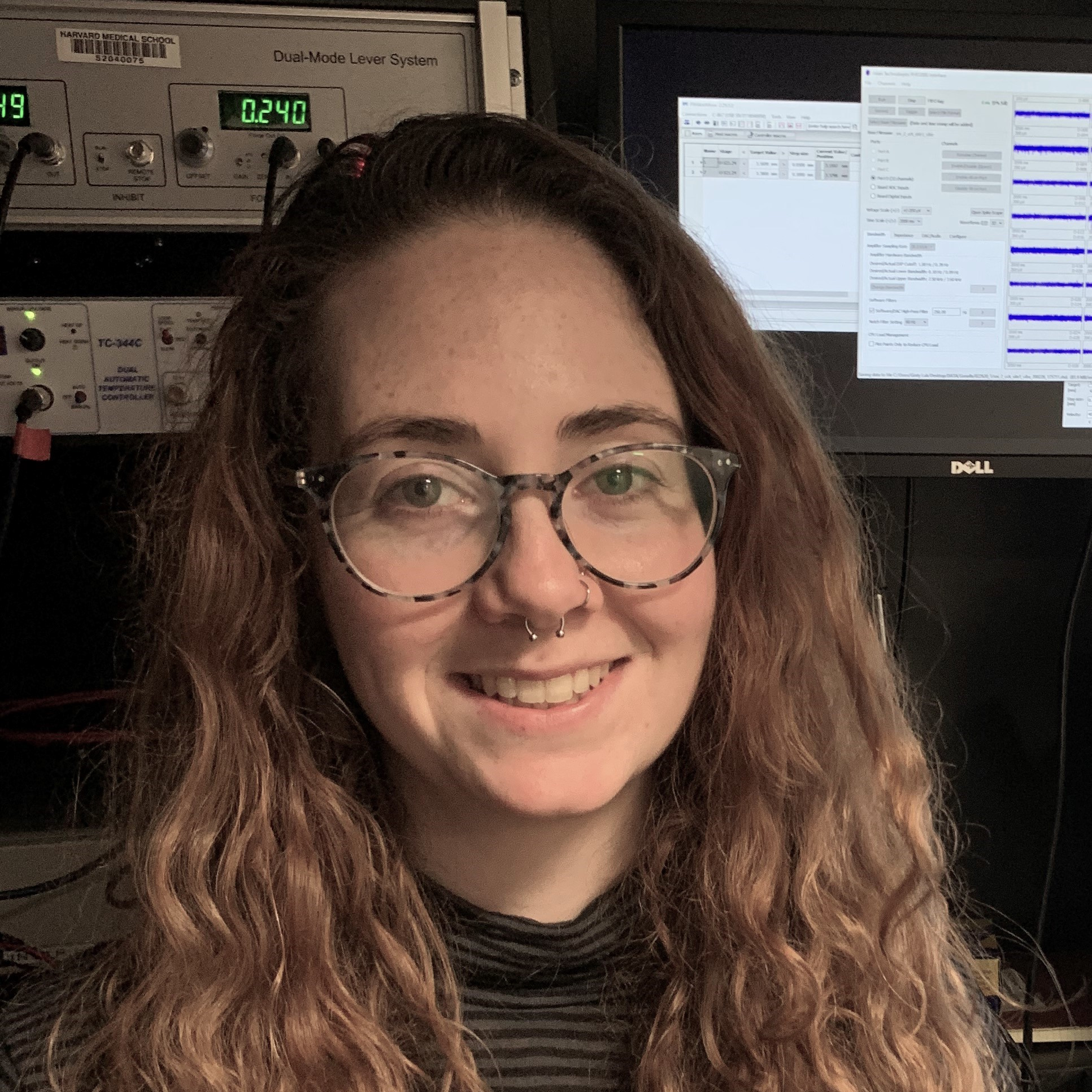
Genelle Rankin, PhD
2024 Leon Levy Scholar in Neuroscience
The Rockefeller University
Sub-disciplinary Category
Systems Neuroscience
Previous Positions
- BA, Bennington College
- PhD, Harvard University (Advisor: Dr. David Ginty)
Bio
Dr. Genelle Rankin is a postdoctoral fellow in Dr. Priya Rajasethupathy’s laboratory at Rockefeller University, where she investigates how thalamocortical loops support working memory maintenance. Prior to joining the Rajasethupathy team, she completed her PhD in David Ginty’s laboratory at Harvard University, studying the functional tuning and network activity of touch-sensitive neurons in the spinal cord dorsal horn.
Research Summary
Identifying and characterizing how thalamic nuclei, specialized areas of the thalamus responsible for relaying sensory and motor signals and regulating consciousness, support working memory maintenance.
Technical Overview
Working memory, a form of short-term memory where information is maintained and manipulated in a task-relevant manner over the course of seconds to minutes, is necessary for many complex cognitive functions. Classic models of working memory focus on persistent neuronal activity within prefrontal cortex as the primary neural correlate of memory, but the mechanisms behind the generation and maintenance of this activity remain incompletely understood. However, new research now suggests that activity between the prefrontal cortex and thalamus, particularly the mediodorsal thalamus (MD), is required for and facilitates accurate performance on working memory tasks. Unfortunately, the functional responses of individual thalamic neurons underlying this support of working memory are unknown. Moreover, it remains unclear whether the MD is the sole or main site of thalamic support for working memory or if other thalamic nuclei also contribute to memory maintenance. Dr. Genelle Rankin will identify thalamocortical circuits supporting working memory and will record activity from individual thalamic neurons revealing the neural response profiles and network dynamics within these circuits. Together, these experiments will provide deeper mechanistic insight into how individual thalamic neurons support working memory maintenance, expand our understanding of how working memory is functionally represented and maintained in the brain, and potentially inform the development of treatments to improve working memory performance.